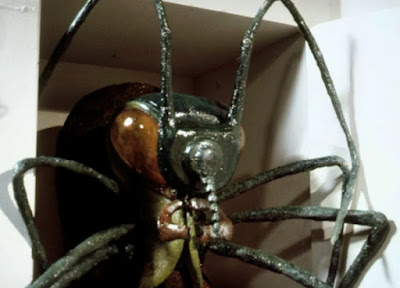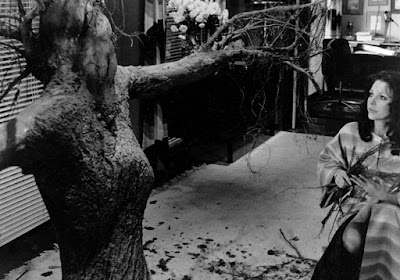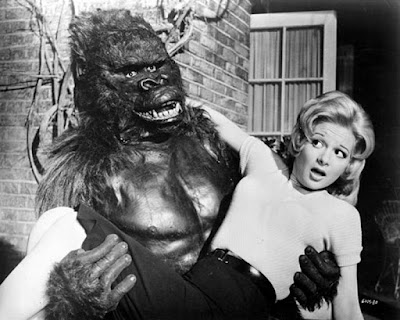DOCTOR WHO - IMAGE OF THE FENDAHL (1977)
A fan favourite, HORROR OF FANG ROCK contains many elements from the poem Flannan Isle by Wilfrid Wilson Gibson, which the Doctor quotes from at the end of the story (the poem draws on the real-life mystery of disappearances in 1900). Here is the cover to the 1978 Target novelisation.
PHILIP Hinchcliffe's three seasons as DOCTOR WHO producer registered unparalleled violence and complaints. Incoming producer Graham Williams was under pressure from BBC brass to tone down the horror elements with his premier block of serials - Season Fifteen - which would screen between September 1977 and March 1978. But from the start Williams was embroidered in a number of behind-the-scenes tussles. His first intended serial, Terence Dicks' THE WITCH LORDS/THE VAMPIRE MUTATION, was vetoed late on by Head of Serials Graeme McDonald, because it would undermine the lavish BBC production of Bram Stoker's Dracula then under preparation; Louise Jameson quit as Leela; and in an attempt to re-connect as a children's show and up the comedy, robot dog K9 became a regular companion - much to Tom Baker's chagrin.
Against this backdrop, it is amazing that Williams' initial broadcast - HORROR OF FANG ROCK - is a triumph. One of the last genuinely scary Classic-era adventures, HORROR OF FANG ROCK sees a shape-changing amorphous jelly (a Rutan scout) crash-land near a desolate Edwardian lighthouse. Initially only populated by a crew of three, soon The Doctor (Baker) and Leela (Jameson) arrive, and survivors from a shipwreck swell the numbers. The alien - one of the race engaged in a perennial war with the Sontarans - is killing its occupants in a quest for life-giving electricity, and The Doctor has been battling to keep it out. But as the death toll rises, realisation hits the Time Lord: "Leela, I've made a terrible mistake, I thought I'd locked the enemy out. Instead I've locked it in - with us." Eventually, The Doctor turns the lighthouse into a laser, knocking out the anti-gravity of the incoming Rutan Mothership.
At the end of Part Two of IMAGE OF THE FENDAHL, the Doctor asks the Fendahl skull if it would like a jelly baby, but actually offers it a liquorice allsort. This was commented on in the 'Watchdog' segment of NATIONWIDE; the DOCTOR WHO production office replied by saying that this was one of the ways the Doctor liked to confuse his enemy.
The realistically cramped lighthouse scenes were shot at Pebble Mill Studios in Birmingham, the only time the series had ever ventured from its London studio base. Strong on atmosphere, this is a tense, claustrophobic tale that makes the most of its small cast and tiny location, but lacks the intensity of the Hinchcliffe Gothic era. Perhaps feeding off their tensions off screen, Baker and Jameson are both outstanding, The Doctor at his unpredictable, arrogant best, and Leela - without her trademark leather outfit - fearless against the threat. The loose background to this teleplay refers to the true mysterious events surrounding the disappearance of three lighthouse keepers from the Flannan Isles lighthouse around 1900. Built approximately twenty miles from the Outer Hebrides, this legend is a mixed bag of allegedly hoax log entries and sea monsters, and even a long-boat of ghosts heading to the Isle on the night the lights went out.
IMAGE OF THE FENDAHL acts as a last stab of gothic horror for the show. In contemporary England, Professor Fendelman (Denis Lill) subjects a twelve million-year-old skull to the effects of his Time Scanner, providing a channel for the malevolent Fendahl to once more terrorise the Earth. The skull is also infiltrating fellow scientist Thea Ransome (Wanda Ventham), who is eventually transformed into the Fendahl core, mutating colleagues into snake-like monsters. The theme of mankind manipulated by an ancient alien again draws from DOCTOR WHO's favourite reference point - the works of Nigel Kneale - but the story is let down by the Fendahl itself; an attractive women with eyes painted on her closed eyelids doesn't really justify a terrifying entity that feeds on death; nor does the climax, where a creature that can teleport itself across space is killed by a handful of rock salt.




































